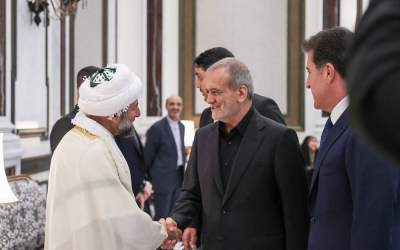The revenues will help the carrier cover its costs and pay back the loans it takes out for the aircraft that are scheduled to arrive over the next decade.
�With this amount, Iran Air will be able to repay the installments for the 200 planes it has bought,� says deputy minister of roads and urban development, Asghar Fakhrieh-Kashan.
The flag carrier�s massive orders include 100 Airbus, 80 Boeing and 20 ATR passenger planes, with an aggregate value of between $20-30 billion, based on Iranian estimates. The list prices top $30 billion.
Iran has so far been delivered seven aircraft. The three Airbus and four ATR planes have all been financed by their manufacturers. Airbus and ATR have agreed to finance a few more.
The prospects of financing the rest of the planes are still murky, as major European banks and big financial institutions are still hesitant to engage with Iran fearing US penalties, even though Iran�s nuclear-related sanctions were lifted in January 2016 as part of a deal Tehran signed with six worked powers a year earlier.
According to Fakhrieh-Kashan, Iran hopes to resolve the financing issues by putting out a tender in a few weeks, in which 10 companies from Japan, Norway, Denmark, China, Ireland and Britain have already expressed readiness.
As part of the plane deals, 32 aircraft are scheduled to land in Iran by the end of 2018. Those include 16 turboprop ATR planes, five of them are to be delivered by the end of December and the rest in 2018.
The Iranian carrier is scheduled to receive four Airbus A320s by the yearend, five of the European planemaker�s A321s and four A330s next year. Three Boeing 737 deliveries are also planned in 2018.
But even when the financing deals are finalized, there are other major steps Iran Air should take to optimize its revenues from the new jets.
�While they [Iran Air] have inducted a handful of new jets, this now needs to be matched with new routes and greater connectivity and codeshare pacts so that travelers have more options beyond Iran Air's current network,� Saj Ahmad, chief analyst of the Dubai-based Strategic Aero Research, told Financial Tribune.
�Without new routes, deploying the planned 200 new airplanes will be difficult. It would hamper earnings and lead to greater costs,� he added.
> Restructuring With an Eye on Selling Shares
Iran Air is fully owned by the state. Alongside attempts to renew its aging fleet, officials are considering listing the company on both Tehran Stock Exchange and international equity markets.
But an outdated and uneconomical structure is tying their hands for the time being.
Minister of Roads and Urban Development Abbas Akhoundi said in February that the airline plans to meet international standards through enhanced management and training to pave the way for its privatization.
Asked by Financial Tribune in a press conference on Wednesday about the current status of Iran Air�s privatization plans, CEO Farhad Parvaresh said the airline still awaits �structural reforms� as part of a legislation passed by the government about two years ago.
Parvaresh referred to a major hurdle pertaining to Iran Air�s pension fund, which accounts for a sizable portion of the carrier�s costs, saying the government is working to resolve this issue within six months.
The government hopes the restructuring of Iran Air, along with its major fleet renovation plan, will help the airline increase the share of air transportation it has been losing to its foreign rivals in the region, which, according to Akhoundi, are earning $4-5 billion in revenues every year.
�Privatization of Iran Air is far removed at this stage,� said Ahmad. �Iran Air is smart enough to know it cannot take on big rivals like Emirates. However, they need to partner up with as many big players as it can. This reduces the threat of direct competition and allows for a greater buildup of traffic.�
# Tags










